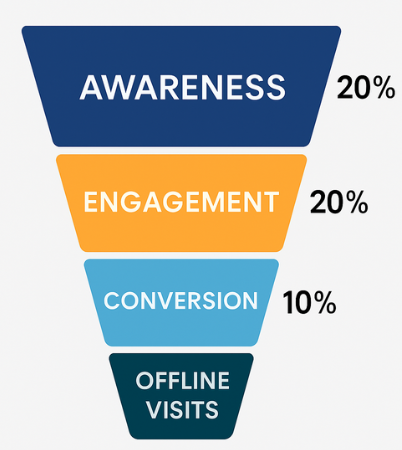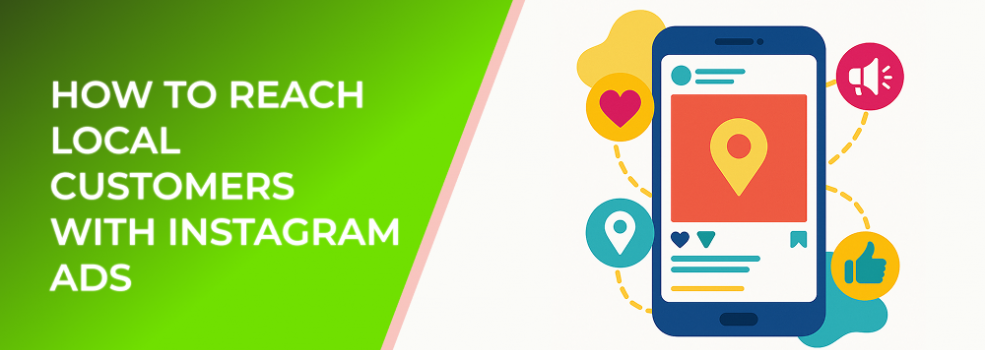Instagram has over 2 billion monthly active users, and 70% of shoppers say they turn to Instagram for product discovery. For local businesses, this means access to a massive audience within a defined area. More importantly, Instagram’s ad platform—powered by Meta’s location-based targeting—lets you reach people who live, work, or recently visited your business area.
A recent Meta report shows that 60% of small businesses using Instagram Ads say the platform helps them attract more local customers. With tools like geotargeting and local awareness campaigns, your ads can appear directly in front of nearby prospects ready to buy.
Step 1: Use Location Targeting Strategically
Instagram allows hyperlocal targeting, meaning you can show ads to users within a specific radius of your store or service area. You can target:
-
People living in a location – great for long-term customer relationships.
-
People recently in a location – useful for restaurants, shops, or events.
-
People traveling in a location – ideal for tourist-oriented businesses.
When setting up your ad set, define a radius of 1–5 miles around your business address. For multi-location businesses, create separate campaigns for each area to customize your creatives and offers.
Step 2: Create Localized Ad Creatives
Your visuals and messaging should reflect your community. Use recognizable local landmarks, real customer photos, or region-specific offers. For instance, a coffee shop could highlight a seasonal drink that’s popular in the neighborhood, while a salon could feature testimonials from nearby clients.
Video ads and Reels perform particularly well. Meta’s internal data shows that video ads receive up to 30% higher engagement than static images when promoting local events or offers. Keep videos short, mobile-friendly, and focused on your product in action.
Step 3: Leverage Engagement and Custom Audiences
Start by running engagement campaigns to build awareness. Then, create Custom Audiences from users who:
-
Engaged with your Instagram page or ads.
-
Visited your website (if your Meta Pixel is installed).
-
Added products to cart but didn’t purchase.

Typical Instagram ad funnel: from local awareness through engagement to conversion and offline visits.”
These warm audiences are ideal for retargeting with special offers or reminders. According to internal LeadEnforce data, campaigns that combine engagement and retargeting deliver up to 45% higher return on ad spend (ROAS) for local businesses.
Step 4: Optimize for Offline Conversions
If you have a physical store, use Offline Events Tracking to measure how many ad viewers actually visited your location. This feature lets you connect ad engagement with real-world outcomes—helping you calculate the true ROI of your Instagram campaigns.
For service-based businesses, encourage direct messages, calls, or bookings through the ad’s CTA button. Ads optimized for Message or Lead Generation objectives can increase inquiries by 20–30%, based on LeadEnforce client benchmarks.
Step 5: Track, Test, and Refine
Monitor performance metrics like cost per result, reach, and engagement. Pay attention to which ad formats and audiences drive local traffic most effectively. Run A/B tests on creatives—try adjusting copy or image style to see what resonates better with your audience.
As a rule of thumb, refresh your local creatives every 4–6 weeks to prevent ad fatigue and maintain relevance.
Final Thoughts
Reaching local customers with Instagram Ads isn’t about massive budgets—it’s about precision. By using smart location targeting, community-centered visuals, and data-backed optimization, even small businesses can generate meaningful growth from a local audience.
For further insights on optimizing your local ad strategy, you might find these LeadEnforce articles useful:

